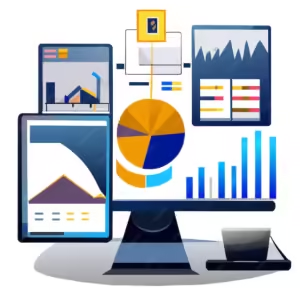Strategies to Enhance Cultural Diversity in the Workplace for Small and Medium Enterprises (SMEs)
Introduction
In today’s globalized world, cultural diversity has become an essential aspect of a successful and innovative workplace. For small and medium enterprises (SMEs), embracing cultural diversity can lead to increased creativity, better problem-solving, and a more inclusive work environment. This article will explore effective strategies to enhance cultural diversity in the workplace for SMEs and address some frequently asked questions on the topic.
Understanding Cultural Diversity
Cultural diversity refers to the presence of multiple cultural or ethnic groups within a society or organization. In the workplace, this diversity can manifest through different languages, traditions, values, and perspectives. Embracing this diversity not only promotes inclusivity but also drives business growth and innovation.
Key Strategies to Enhance Cultural Diversity
- Promote an Inclusive Culture
Creating an inclusive culture is the foundation of enhancing cultural diversity. This involves:
- Leadership Commitment: Leaders should demonstrate a commitment to diversity and inclusion through their actions and policies.
- Inclusive Policies: Implement policies that promote equal opportunities for all employees, regardless of their cultural background.
- Diversity Training: Conduct regular training sessions to educate employees about the importance of cultural diversity and how to embrace it.
- Diverse Recruitment Practices
To foster a culturally diverse workforce, SMEs should focus on:
- Broadening Recruitment Channels: Use various platforms and networks to reach a wider pool of candidates from different cultural backgrounds.
- Unbiased Hiring Process: Implement measures to ensure the hiring process is free from bias, such as using blind resumes and diverse interview panels.
- Celebrate Cultural Events
Recognizing and celebrating cultural events can create a sense of belonging and respect among employees. Consider:
- Cultural Awareness Days: Organize events that highlight different cultures, such as cultural fairs, food festivals, and heritage days.
- Holiday Celebrations: Acknowledge and celebrate diverse holidays to make employees feel valued and included.
- Support Employee Resource Groups (ERGs)
ERGs can play a vital role in promoting cultural diversity by providing:
- Safe Spaces: Create spaces where employees can share their experiences and support one another.
- Networking Opportunities: Facilitate networking events that allow employees from different cultural backgrounds to connect and collaborate.
- Encourage Multilingualism
Promoting multilingualism can enhance communication and inclusion within the workplace:
- Language Training Programs: Offer language classes to help employees learn new languages and improve communication.
- Multilingual Resources: Provide resources and materials in multiple languages to accommodate non-native speakers.
- Foster Open Communication
Open communication is key to understanding and embracing cultural diversity:
- Feedback Mechanisms: Establish channels for employees to provide feedback on diversity and inclusion initiatives.
- Regular Check-Ins: Conduct regular check-ins with employees to discuss their experiences and address any concerns related to cultural diversity.

Frequently Asked Questions (FAQs)
Why is cultural diversity important in the workplace?
Cultural diversity is important because it brings different perspectives, fosters innovation, and creates a more inclusive and respectful work environment. It also helps businesses better understand and serve diverse customer bases.
How can SMEs overcome challenges related to cultural diversity?
SMEs can overcome challenges by promoting an inclusive culture, implementing unbiased hiring practices, celebrating cultural events, supporting ERGs, encouraging multilingualism, and fostering open communication.
What are some benefits of cultural diversity for SMEs?
Benefits of cultural diversity for SMEs include increased creativity, improved problem-solving, higher employee engagement, better decision-making, and enhanced company reputation.
How can leaders demonstrate their commitment to cultural diversity?
Leaders can demonstrate their commitment by actively participating in diversity and inclusion initiatives, setting clear diversity goals, providing necessary resources, and fostering an inclusive work environment.
What role do Employee Resource Groups (ERGs) play in promoting cultural diversity?
ERGs provide support and networking opportunities for employees from diverse cultural backgrounds, create safe spaces for sharing experiences, and help drive diversity and inclusion initiatives within the organization.
Conclusion
Enhancing cultural diversity in the workplace is not only a moral imperative but also a strategic advantage for SMEs. By promoting an inclusive culture, adopting diverse recruitment practices, celebrating cultural events, supporting ERGs, encouraging multilingualism, and fostering open communication, SMEs can create a thriving and innovative work environment. Embracing cultural diversity will ultimately lead to greater business success and a more harmonious workplace.


















